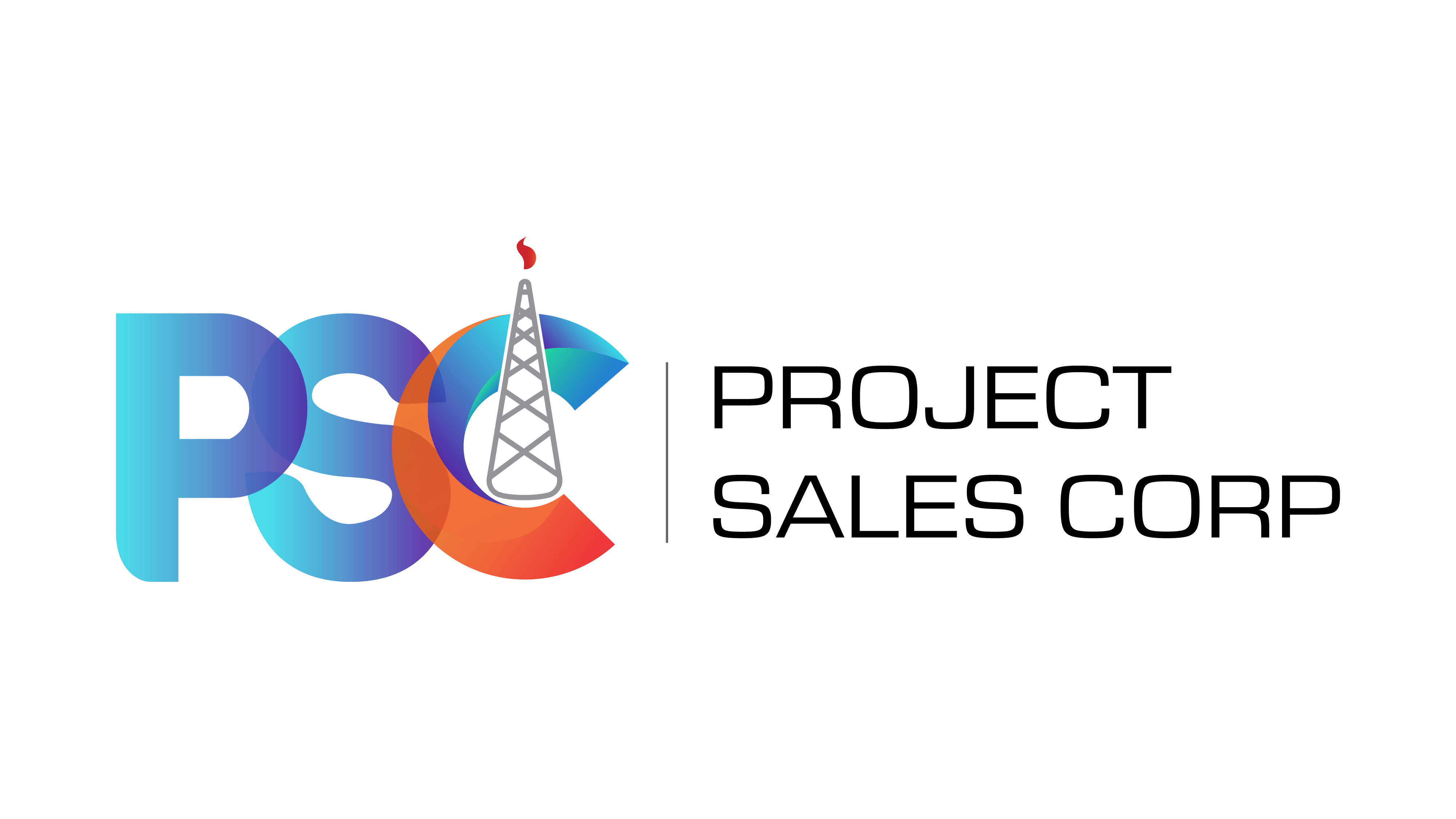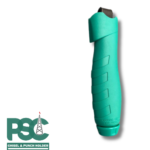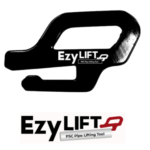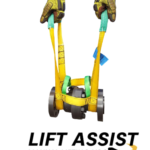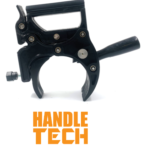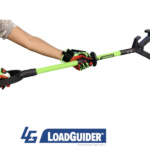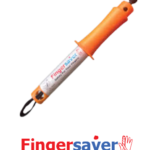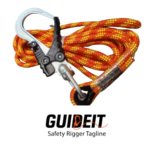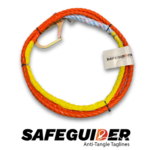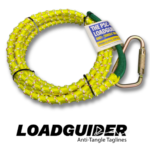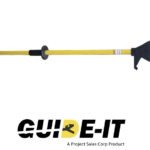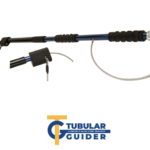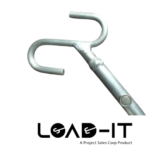Improving Hand Safety in Manufacturing Operations
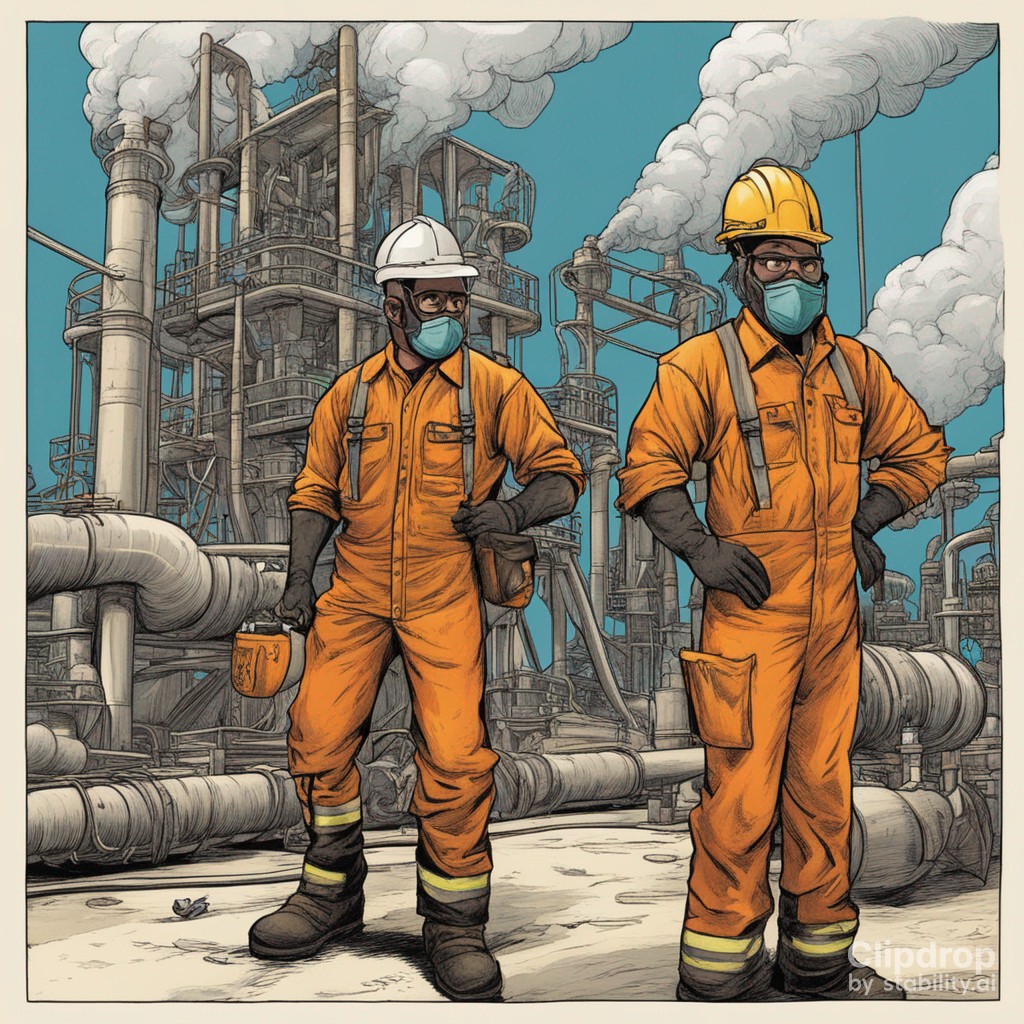
Current Situation
- Customers looking at minimizing all potential hand injuries during material handling operations (hand safety tool) on the shop floor.
- There is a large number of applications where the suspended loads are needed to be guided before it rests in its final stacking place.
- Most of the lifting operations are carried out using overhead cranes and fiber or wire rope slings.
- Most applications are currently having hands guide the load or touch the suspended load, exposing workers to potential cut, abrasion, and “caught between” crush injuries and there are several instances of people very close to fall zones.
- The objective of the meeting is to explore possibilities of using PSC hand safety range to allow hands to be away at a distance and still be able to guide the loads.
Potential Hazards When Using Hands to Guide Suspended Loads
Suspended Load has a Red Zone or the Fall Zone, standing close to a load can injure the body, legs in case of a fall or coming in between load and another object.
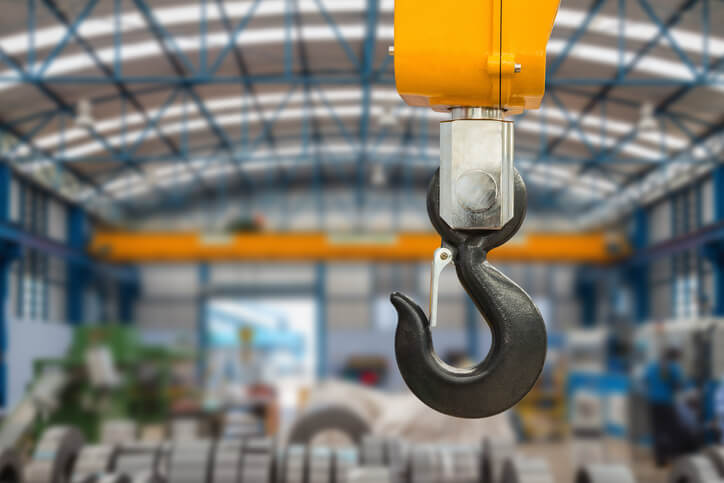
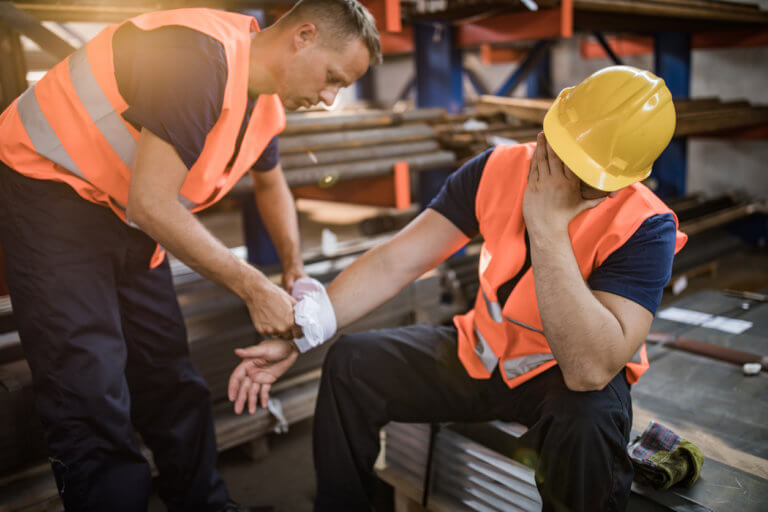
Cut Injuries
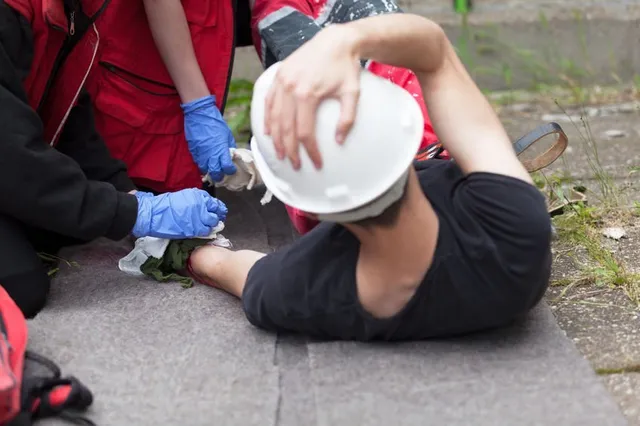
Abrasion and Puncture Injuries
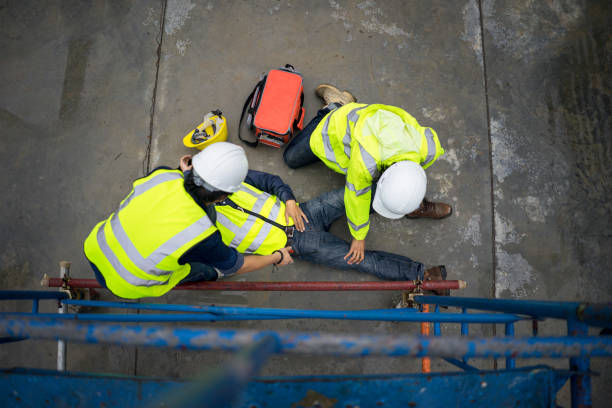
Crush or Impact Injuries
Understanding Suspended Loads
What Is a Suspended Load?
Loads may be suspended by forklifts; wheel loaders, overhead, boom, and jib cranes. Essentially, anything that is lifted above ground is considered a suspended load. You’ll find such loads on riggings, slings, pallets, and various pieces of equipment. The larger weight and size of the material lifted, the more hazardous the job and its surrounding areas become.
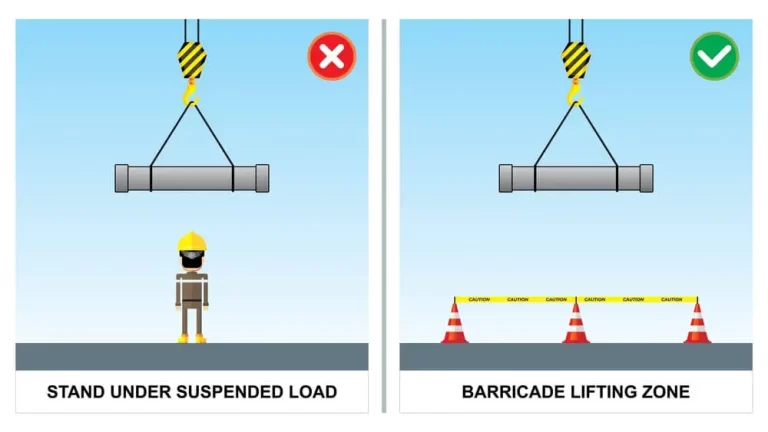
Understanding Fall/Drop Zone


The fall zone is not limited to the immediate area beneath the load, instead it’s the reasonably foreseeable area that partially or completely suspended loads could fall into in the event of an accident (failed slings, load tilts and topples, failing of rigging hardware, etc.)
Understanding the Fall Zone
The fall zone as defined by OSHA is “the area including, but not limited to, the area directly beneath the load in which it is reasonably foreseeable that partially or completely suspended materials could fall in the event of an accident.” OSHA goes on to state that standing under a suspended load is prohibited and that “while the operator is not moving a suspended load, no employee must be within the fall zone, except for employees (who are): engaged in hooking, unhooking or guiding a load; engaged in the initial attachment of the load to a component or structure…”
Make sure wire ropes are properly lubricated, slings are inspected periodically (apart from annual load testing for wear and tear), and all lifting gear are in order. Under no circumstances should a person go into the red zone or “line of fire”.
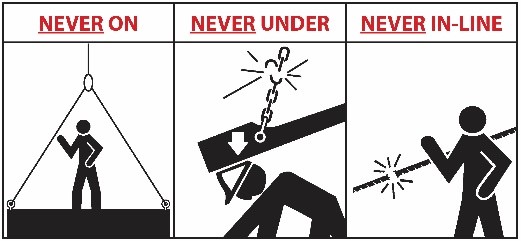
Assessing Workplace Hazard & Ways to Mitigate them “Hierarchy of Controls”
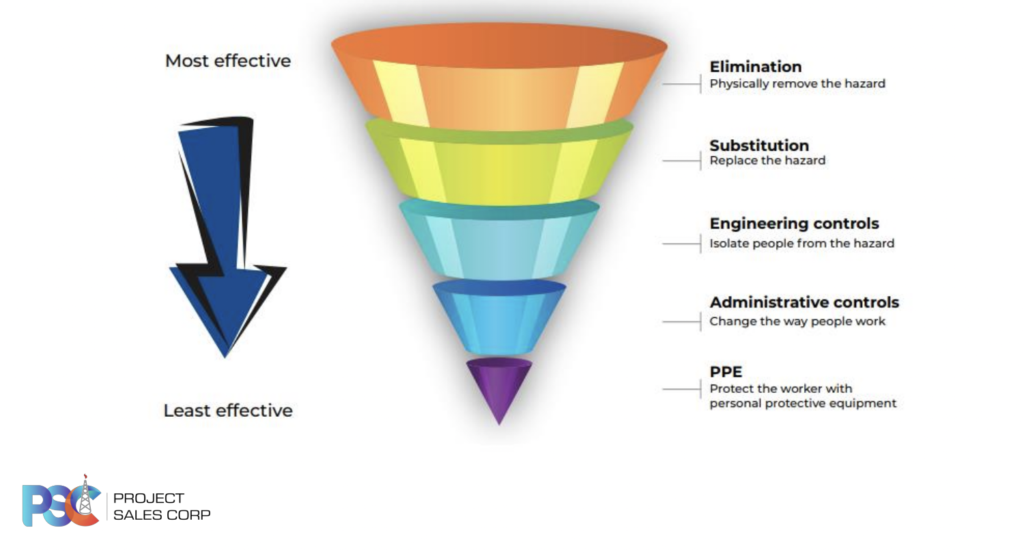
Source: NIOSH
The hierarchy of controls is a method of identifying and ranking safeguards to protect workers from hazards. They are arranged from the most to least effective and include elimination, substitution, engineering controls, administrative controls and personal protective equipment. Often, you’ll need to combine control methods to best protect workers. For example, a local exhaust system (an engineering control) requires training, periodic inspections, and preventive maintenance (administrative controls). You will also need to consider feasibility.
What’s the “Hierarchy
of Controls”
in Mitigating Hazards
We assume all possibilities of eliminating the suspended loads have been studied
We assume there is a proper lifting plan, certified materials are being used for slings, shackles, hooks, etc. cranes are regular inspected and certified, and all other factors areconsidered.
Ensure that the hierarchy of risk controls is used to determine if working with suspended loads can be eliminated ·
For work with suspended loads that cannot be eliminated or isolated, ensure that workers are provided with appropriate protective equipment, that safe methods of work are planned, communicated and implemented and that workers have been trained and understand the use of this equipment ·
Potential Hazards with Suspended Loads
- Pinch, Cuts, Abrasions
- Dropped Objects or Suspended Loads Hits
- Crushing of Hands, Feet, Body
- Tripping and Fall Hazards
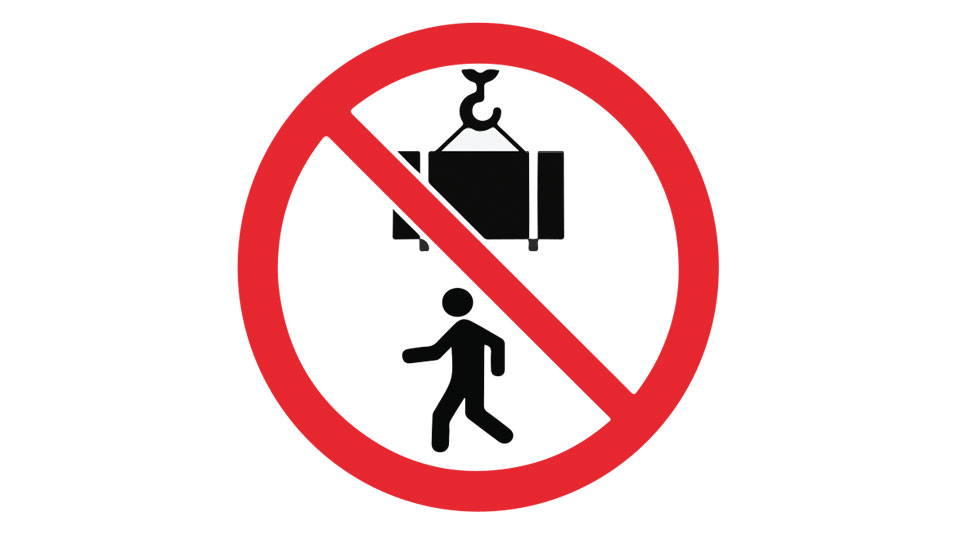
The first step towards safety is the Correct MINDSET
1
Awareness is the first step towards mitigating hazards
2
Employer should recognize that workplace injuries can have serious consequences, not only foe the injured workers but also for the overall productivity and reputation of the company.
3
By investing in safety tools like PSC Taglines or PSC Push pull poles, employers can reduce the risk of injuries cand create a safer work environment for their employees.
4
We are sure if not 100% we can explore options to isolate people from the hazard, change the way people work and using PPE to mitigate all potential risks.
Why PSC Hands-Free Tools ? - Hand Safety Tool
- We have been into hand safety since 2009 when we first brought task-specific gloves to India.
- Introduced Hands-Free range in 2014 when we found that hand injuries still happened as the process itself was risky and gloves were only the last line of defense.
- India’s largest hands-free distributor and exporting PSC brand to over 20 countries worldwide.
- PSC products are of the best quality and specified as the preferred product by oil and gas companies and contractors and industries like BHEL, and Hindalco.
- Have resources for samples, demos, and training as needed to provide the correct usage support
Let’s Look at our Product Portfolio
These hands-free tools can help to reduce hand and finger injuries by facilitating safe movement of the load rather than touch or manipulate with your hands. Some tools (Taglines) are used to position and control a load that may sway, spin, or otherwise require handling to maintain proper load control. Why do we call them Hands-Free – because they allow the rigger to avoid touching a load with their hand and still control it.
PSC - World's Leading Hands-Free Safety Tools Distributor
Project Sales Corp ( PSC ) is a specialized Hand Safety company distributing and marketing most complete range of hands protection products to the oilfeild industry. Unlike other vendors, our focus is on mitigating risks associated with hand injuries while handling tasks in oilfeilds, platforms and yards in the oil and gas industry. We brought Impact Gloves to India in 2009 and are the largest distributors of gloves for oilfeild selling over 10,000s of pairs annually. PSC also introduced its Hands-Free tools in 2014 and is one of the largest distributors worldwide.
CHOOSE YOUR SAFETY WISELY
If you have any question or require further information, please do not hesitate to contact us at anytime.
(+91) 96031-66448; 98851-49412
Contact with our sales team now!
